It was around 3PM when I asked Artist-in-Residence Justin Favela to join me in the little terrace at SPACE. After stating that he loves overpaying for food (probably sarcastically), the chilly summer weather in Maine and the support for the arts in Portland, we dove into a conversation about life and work. Justin Favela is a Las Vegas native working in the mediums of painting, sculpture, and performance. His work draws from art history, popular culture, and his Guatemalan/Mexican heritage. His exhibition, Pólvora, will open at SPACE on July 6th.
I have seen that a lot of your work is now based on identity issues. This is really broad, but what does art mean to you and what is your goal, if any?
I’m a creative person and when I got to college I got into making visual art. It’s just the easiest way for me to express myself. Once I got into sculpture and installation, I really loved doing that. So, then, when I tried to find my voice as an artist, I said okay, what is my work going to be about? I stayed away from making art about identity and latinidad, because I thought that as soon as I became a brown artist making art about being Latino I was going to be encasillado in that box and I’m more than that. But once I made my first piñata, it changed. I have been doing them for 10 years now. It was in art school when I made my first piñata in 2008.
Now, I am making art about my identity and it’s been an amazing journey. I am getting all these opportunities and I have this platform now as an artist. I kinda find it my responsibility to really represent para mi gente. Now, I think my approach has shifted from just making art to making art because I feel responsible and I can do some good through it. If I was a little kid and I walked into a gallery and I saw pinata or a Latino artist making work, it would have changed my life. So, I think about those moments every time when I am installing something. A lot of my work is about institutional critique, institutional inclusion but also a celebration of our culture. So many times as Latinos, we are not seen as multidimensional people. Look at the news right now, their treating us like animals at the border, putting children in cages, separating families, and making us look like we are dumb, savages. So with my art, with my podcast, it is all different ways to show the different dimensions of latinidad.
I saw a video you have with Maruca Salazar at the Museo de las Americas in Denver, where you had your work La Sirena Lowrider. Maruca expresses her happiness when she found out you were making it up to more institutionalized galleries and museum. When do you consider your artistic career to start? Is there any correlation between being recognized by very institutionalized art-exhibits and starting to consider yourself a full-on artist?
To be honest, I feel like I have been an artist only for a year because this month. A year ago was the month that I quit my office job. My jobs were art related and important, I was the curator for the art gallery and different art spaces at the place where I worked last. The work before that was a very corporate job, I was the administrator for this multimillion dollar gallery. The goal was to sell at least a million dollars a month, and somehow I got the job of being the bookkeeper and the person that deals with sales. I had zero experience with that so it was a lot of math I wasn’t used to. That was a really interesting experience that I hated, but also loved in the way that I got to see the inner workings of corporate art. It is so gross. Anyway, for another 7 years I also worked at the Neon Museum in Las Vegas.
For me “coming out as an artist” was too similar to my queer coming-out. How did your family take the coming-out process as an artist?
I feel like my mum and my grandmas don’t really understand. Mi abuela mexicana, I think she gets it a little bit more. She is also very similar to me. We love attention. She loves talking about herself, just like me, and she loves attention. She likes to collaborate with me. That was a very cool moment when I got to collaborate with my grandma. I got to write her name on a plaque, they put it on a museum, and I took her to see it. Mi familia guatemalteca, though, mi abuela de Guatemala me acaba de decir, she is like, “ay, Justincito, no entiendo lo que tú haces, lo que tu haces no es estable” [Ay, Justincito, I don’t get what you do, what you do is not stable] and I am like what are you talking about. I’ve been an artist for a full year, I am stable, I am fine. But she’s like “no, no, no mi hijito, eso no me gusta.” She would prefer that I have a regular job, it’s just security and same with my mum. She thinks it’s great I am traveling so much, but she always asks me what do I have. And I am just like, what do I need? My goal in the next to years is to buy mum a house ya pa que se calle [so that she shuts up].
On that line, what is the role of your family in your work? What do you want them to get out of it?
Siempre estoy pensando en ellos. [I’m always thinking of them]. So, like, a big thing about my work is that I want it to be accessible. I do a lot of work in institutions, and galleries, places like SPACE, that are for a certain demographic, and so there is already a barrier. There are certain people that go to museums. So, if my work is in that museum I want my family (I always think of my grandmother or mi primo, who is 9 years old) to understand what I am doing. As long as they understand what I am doing I am happy. I also try to include my family in my work. Honestly, this takes up so much of my time that including them in my work makes me spend more time with them. So, I still collaborate a lot with my Mexican grandma, but my Central American identity has been erased because people in America don’t care about it but also they don’t know about it. In the Southwest of the US, Mexico is the default– Chicano, Mexicano. Nobody else exists. So, I made a commitment that next year, I am going to spend more time with my Guatemalan family and acknowledge Central America in my work. But I have to be careful. Soy centroamericano, pero even mi acento pocho, ya no tiene nada de guatemalteco. [I am Central American, but even my americanized Spanish accent doesn’t have anything Guatemalan on it anymore] It’s like mexicano pocho. [It’s like a poor americanized Mexican accent] So I feel like if I am being honest with myself and want to celebrate Guatemalan culture, I feel like that should come across. I don’t wanna come across as exploiting a culture.
How do you think an American upbringing has come on the way of your Mexicanness or your Guatemalan identity?
When I first started making art, I thought I am making art about what people think my identity is. So I am gonna say, “Oh, Justin you like tacos, I am gonna make art about tacos.” But then there was a shift when I went to Mexico. I had a residency for a couple of months in Puebla and I was doing the same shit. I was putting piñatas outside and calling them interventions, but nobody would respond to them. Then I had a moment, bitch, nobody cares about piñatas in Mexico. That’s when I had the realization that I was making art for white people. I am making art for the art world. That’s when I had a big shift. I am gonna make art for me, I am gonna make art for my family. That’s when things really started to change. So back to your question, that popular feeling of “not being de aquí ni de allá” [“from here or from there”] You know what? That is bullshit. It’s something that is very romanticized here in the States. “Oh, I don’t belong because here I am an other, but then I go to my home country and I am also a stranger in my own land.” But I think that is just a white supremacist narrative that we need to break free of. Now I hate that the “ni de aquí ni de allá.” It is a binary that doesn’t exist. So when people ask, are you Mexican, are you Guatemalan, are you American? Yes. I can be more than one thing. People love to put labels on people and, in a way, that is important. But we can fit into multiple boxes. When people romanticize this feeling of the motherland, I think it is important to think of it as if you can have multiple homes.
For sure. So in that line, when it comes to your community engagement and your study of pop culture, your podcast Latinos Who Lunch comes to mind. Who are you aiming to reach with your podcast?
The main goal of the show has shifted. Babelito and I have been friends for like 4 or 5 years. The first 2 years we were friends we couldn’t believe we had found each other, an art historian (an academic) and then an artist that is also Mexican. A few months into knowing each other, we started to go to coffeeshops and thought that we should be recording what we talked about. I love podcasts because of the nature of my work. I always listened to them while glueing stuff. I started listening to these queer podcasts from black people. And then I was like “Wow, I wish there was a podcast with two gay Latinos talking, just talking, I don’t care what they talk about, just talking.” I kept on looking for one but I couldn’t find one and, finally, I told Babelito “dude, let’s just do it. Let’s talk, let’s turn the mics on and talk, and all I want this podcast to be is the two of us talking to each other and we’ll record it. We’ll pick a topic and talk for an hour. See what happens.”
That’s how we got started. Now, it’s changed a little bit and we see the podcast as a way of giving a platform to people like us. But then also, to create a space, even if it’s digital, even if it’s online, for people to feel comfortable and be a 100% in. The community we’ve met through the podcast has been incredible. For example, me going to Arona to las Islas Canarias in Spain two weeks ago, that was thanks to the podcast. I am sure someone saw it or recognized that I was doing that too, and while I was there I was around a bunch of queer people, I was a 100% myself. Those spaces are so important and I think Latinos Who Lunch has become such a space. As a queer person, as a Latino, as a person in the margins, I feel like we are not allowed to make mistakes, we are not allowed to be mediocre, we are not allowed to screw up. We have to be excellent in everything we do or else we are not taken seriously. In Latinos Who Lunch we are also advocates of people just doing it. You wanna start a podcast? Fucking do it. You know how many mediocre white people are making bad podcasts and they’re still making money out of it? So many. We deserve that too. It doesn’t have to be about changing the world, but taking up space.
You are setting up a piñata installation in our gallery, Pólvora, and I know most of your current work revolves around that craft. How does one go from making these for fun to elevating the craft to fine art?
The first time that I used the piñata, I was looking for a symbol that captured my Latinidad in a very simple way, y la piñata es algo bien mexicano [and piñata is something quite Mexican] and they use it a lot in the States, too. It was a perfect symbol and on the same topic of accessibility, everybody understands paper and cardboard. They understand the material, so that is not a mystery there. So after making small piñatas as objects, I got bored and started to push the piñatas past an object, looking at the piñata as a medium. I didn’t realize it would be such a big thing because it is cartonería, it is a craft and a lot of people would not consider it fine art. So I love that it’s blurring that line. Now that I do installations, people go like “these are just decorations.” And I tell them, “Oh honey, you think these are decorations? Let me give you decorations.” So now, I do performances that I call Fiesta, where my family and I literally have a party and that’s my art. “Okay, so you think my art is just cute and just a little decorating for Cinco de Mayo or whatever, okay, I’ll do that too.” It’s this thing that I used to take offense of but now I think “Oh, there is something here, and I like pushing the boundaries.” That’s why I like using the piñata cause it pushes those boundaries.
I have seen some photos of your installation Fridalandia. At the Denver Museum of Art, they say that “you question perceptions about Mexico and the Americas” through that work, “translating so-called high art through your use of craft materials to critique imagined symbols of Mexicanidad.” What do you think qualifies as such imagined symbols of Mexicanidad?
With that exhibit I was thinking about representation, how people see pop culture and think that is what Mexico and Mexicanidad is. That installation was me making art not about Frida, but about the movie Frida. It was a replica from the set of the movie, just to show how fake and artificial it is. I am from Las Vegas, and this is how my upbringing goes into my work. In Las Vegas, everything is façade, everything is surface, everything is shallow, everything is fake. So if everything is fake, fake is our reality. So I am here in Portland, I look at these buildings and my assumption is that these are fake brick buildings. They are not real. My go-to is everything is fake. People are obsessed with authenticity and it is so freaking boring. Honesty sucks, honesty hurts people. Why would you want the truth? The artificial and fakeness is so much easier and so much nicer to look at.
Just go to LA. Go to any callejon, donde vendan mierda y media [wherever they sell shit] and it’s the same shit. Concha stuff, Virgen de Guadalupe, old English font that says “chingón.” That’s very LA, though, but you go to Mexico to the gift shops and it is the same thing. Tequila shots and stuff. They are selling you the same idea. And this is all reinforced to this day. I just watched the movie Coco. There were two things that bugged the shit out of me– the presence of a border at the afterlife, how there was border patrol even after you die. Can’t we not get a break? And then, the second thing, how they use alebrijes. Disney has mistakenly tied these sculptures to pre-Colombian times when they are in fact very new. We are actually doing episode 78 on the movie with my friend Irene that’s a professor at Wellesley College.
I’ve seen that one of your earlier works, Piñatatopia, was based on Velasco’s Valley of México, a painting that invites the beholder to create new symbols about Mexico. In this installation, you let the visitors draw what Mexico meant to them. What symbols did people think of and draw? Were they positive or negative?
Oh, man, I still have all those drawings. Really racist shit. Tacos, coronas, the same stuff. What was funny is that some of it was also Spanish, several people drew flamenco dancers. They couldn’t tell the difference. It made me think about my work and how I want to take a bit more responsibility.
Luis David Molina Rueda is a Maine-based (for now, anyway) Spanish wanderer concerned with arts, culture and the ga(y)ze. A current student at Bates College and summer outreach intern at SPACE, he works in the mediums of theater and writing.
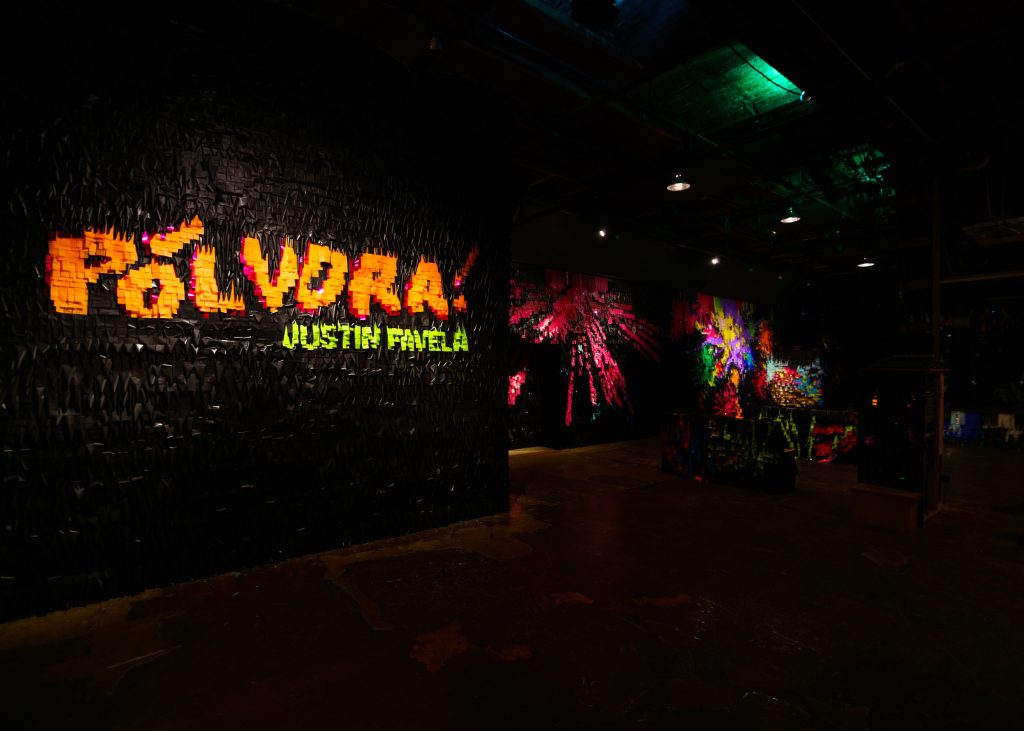
photo credit: Joel Tsui 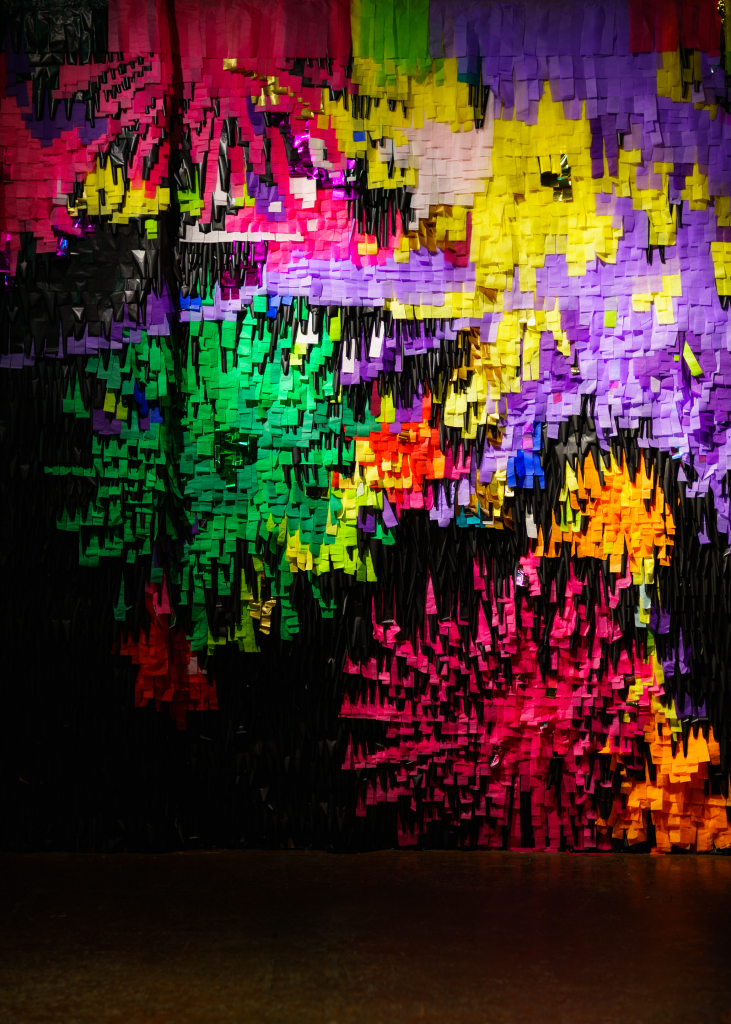
photo credit: Joel Tsui 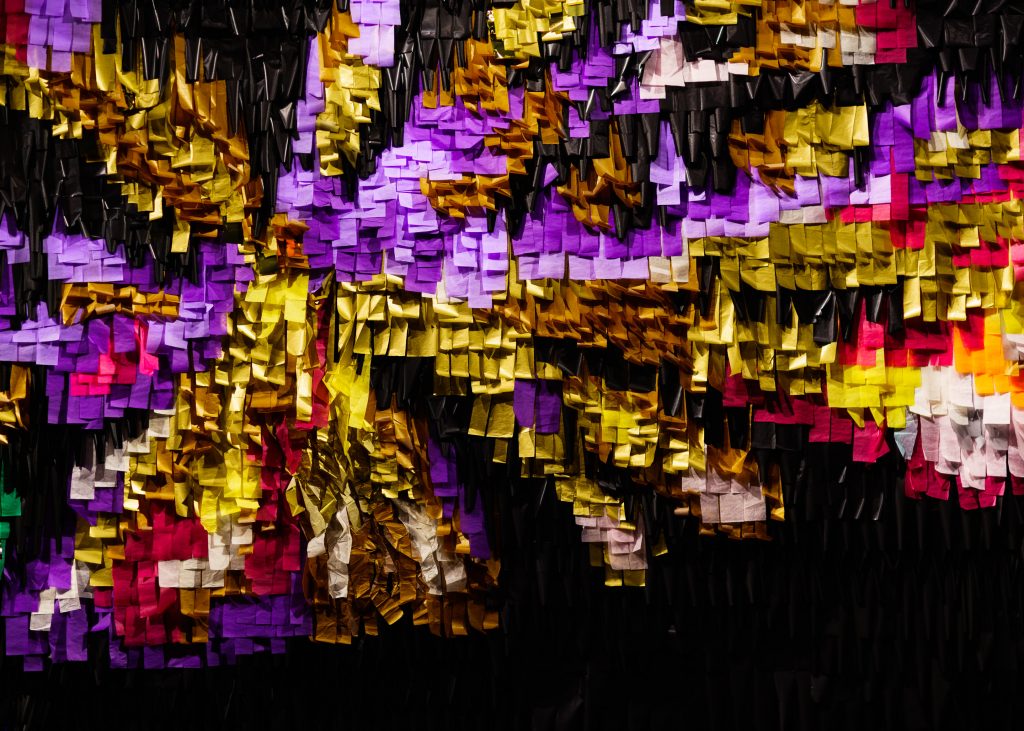
photo credit: Joel Tsui 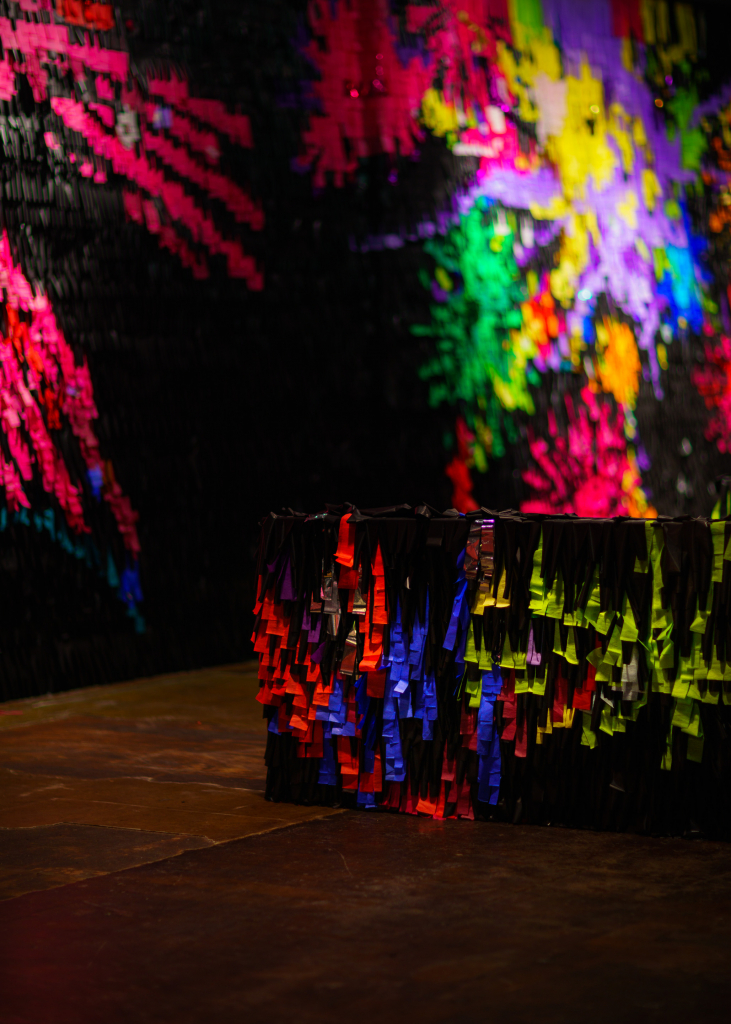
photo credit: Joel Tsui 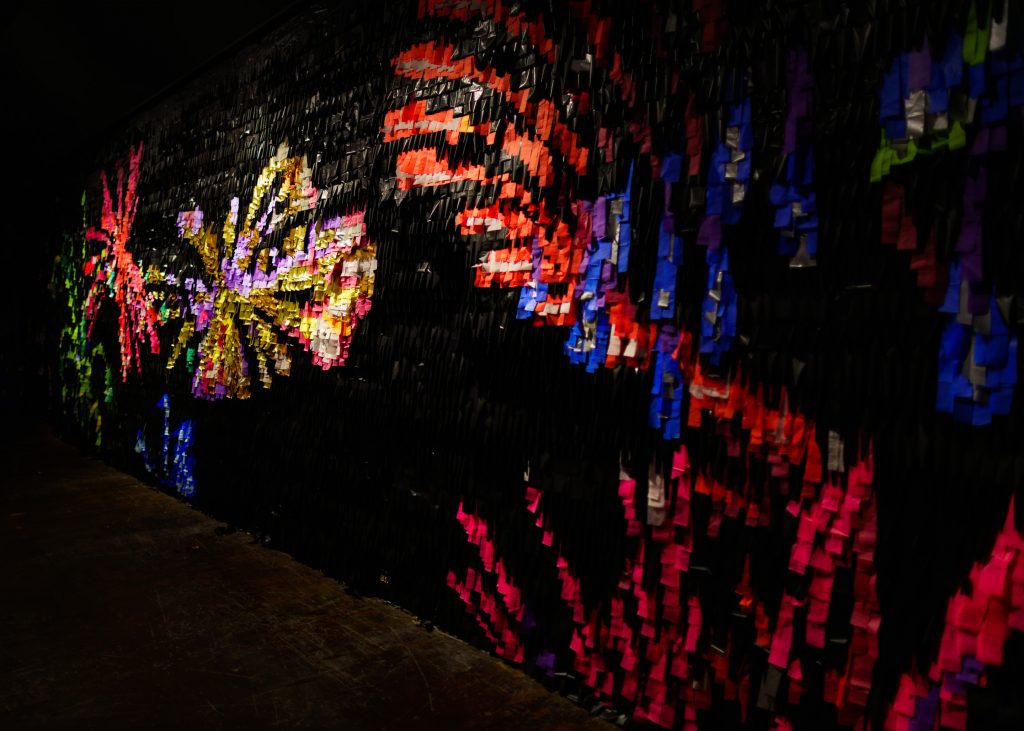
photo credit: Joel Tsui 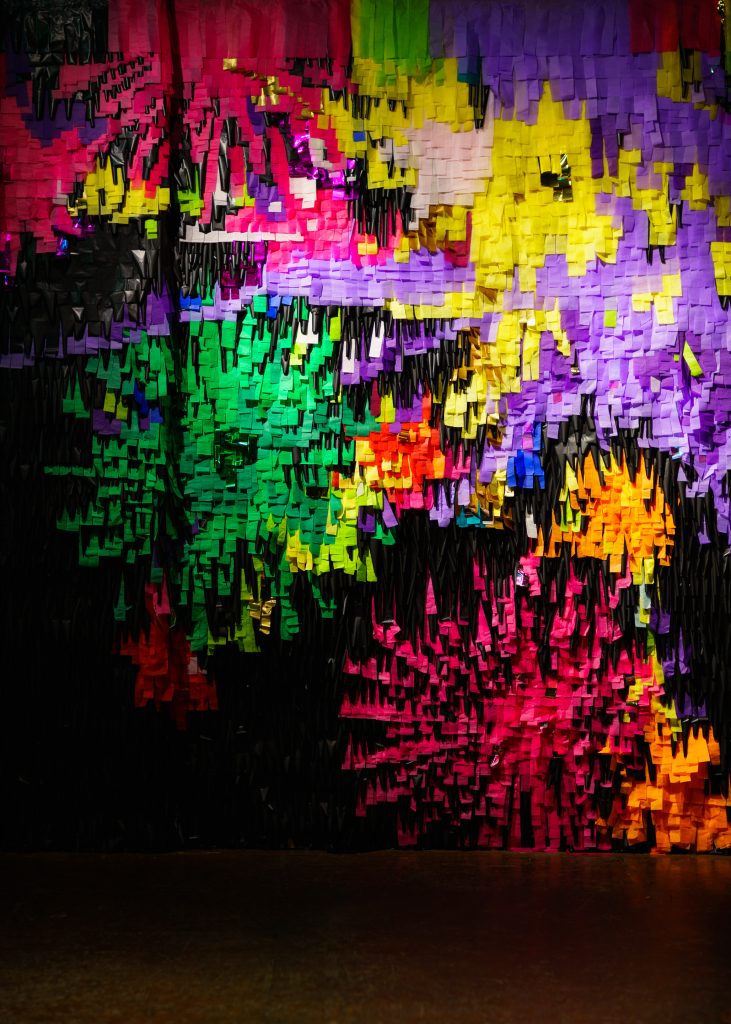
photo credit: Joel Tsui 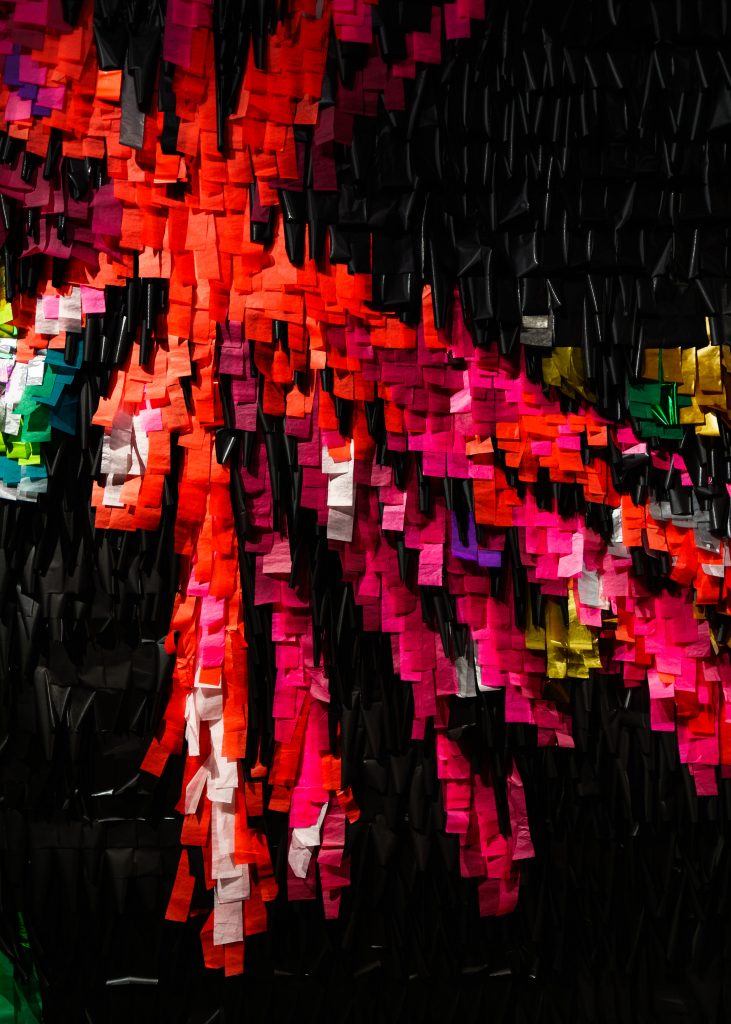
photo credit: Joel Tsui 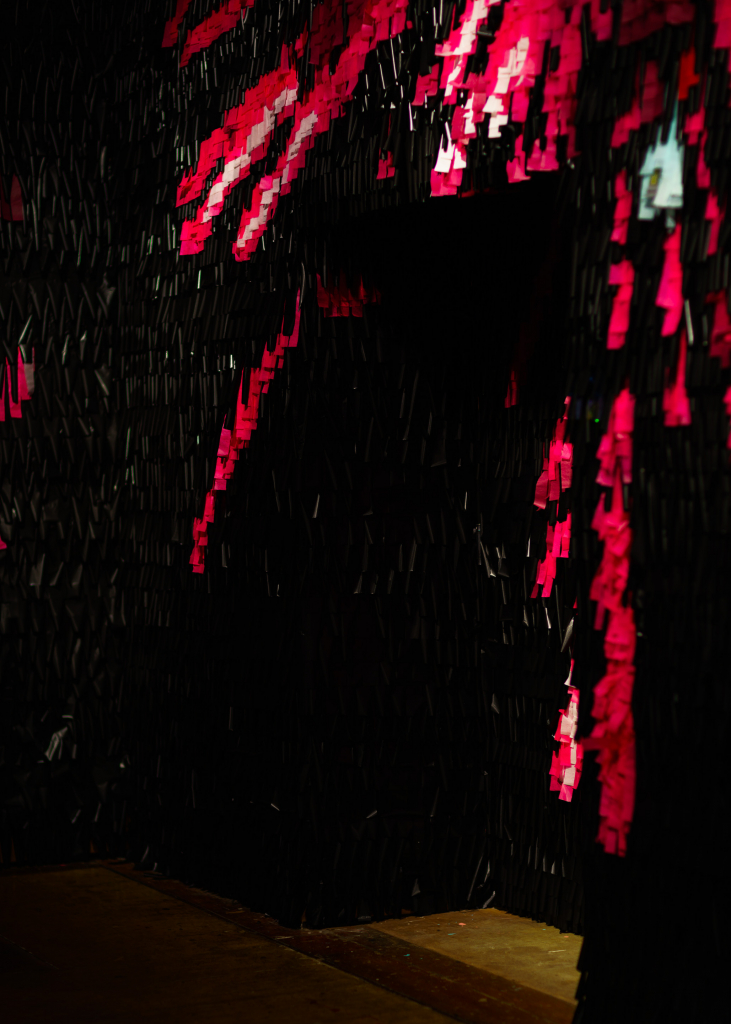
photo credit: Joel Tsui 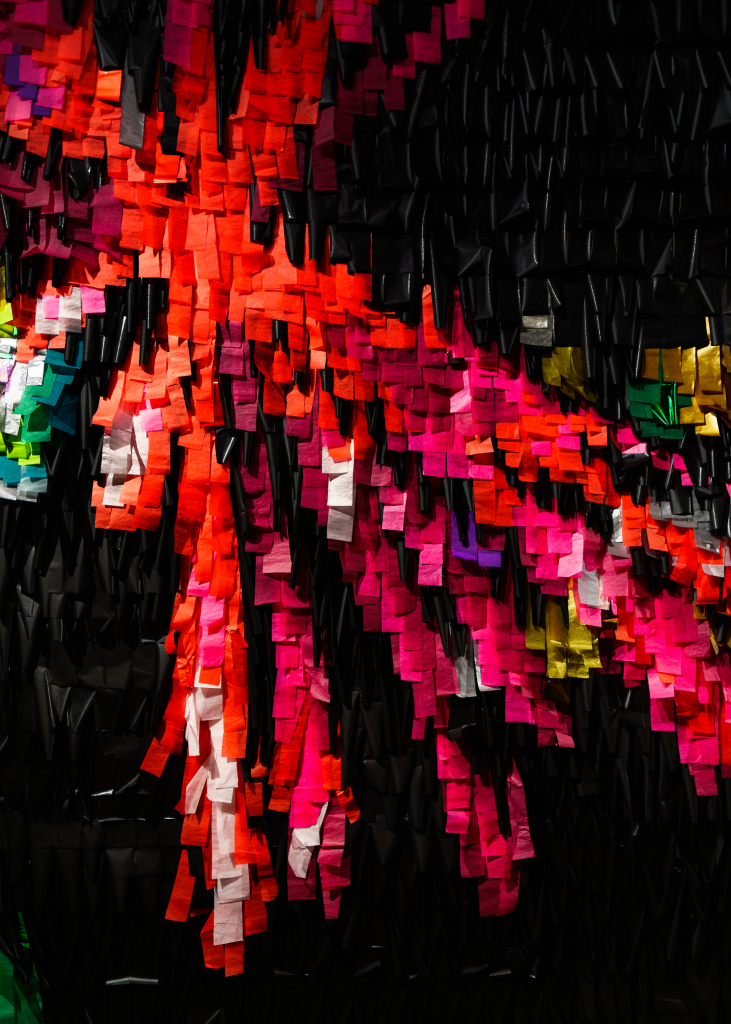
photo credit: Joel Tsui 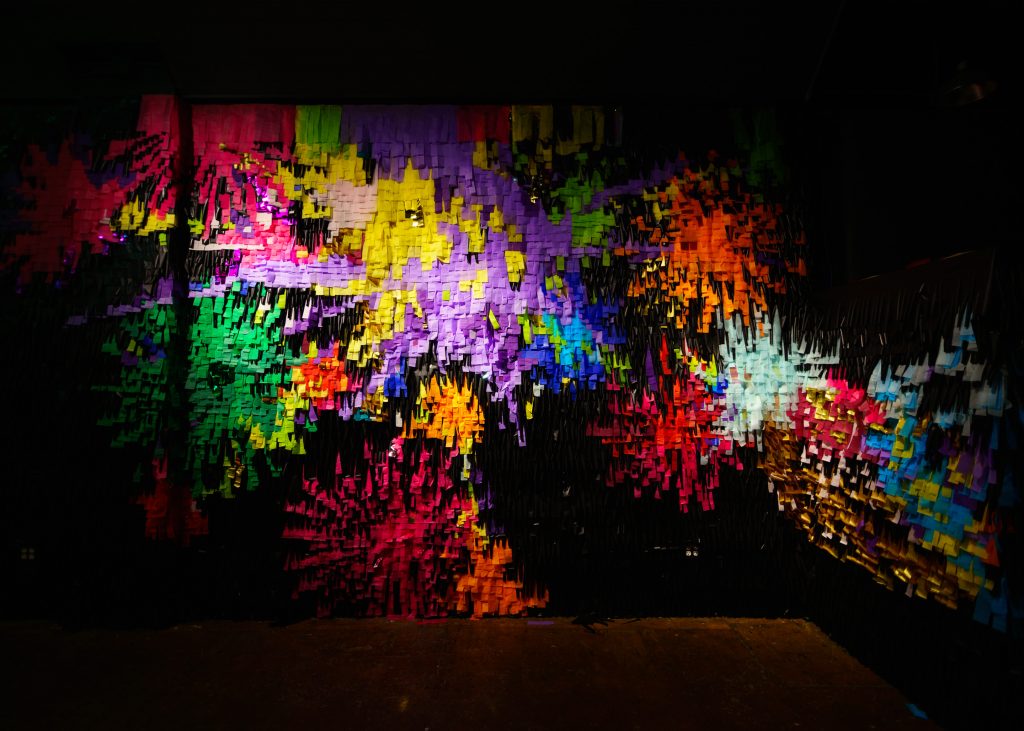
photo credit: Joel Tsui

